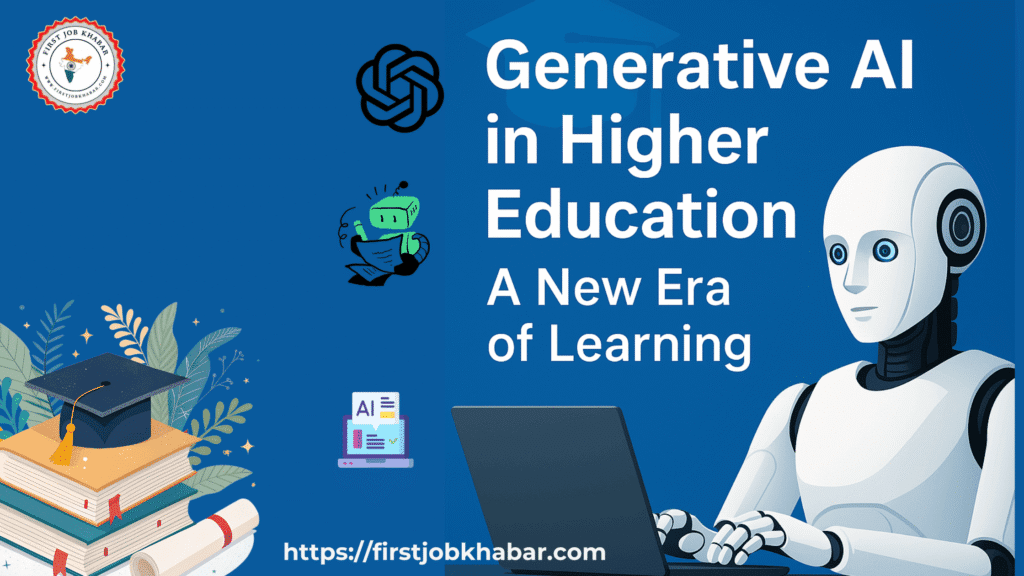
Artificial intelligence has been making headlines for some time now, particularly in recent months for the incorporation of generative AI into higher education. From ChatGPT supporting students to DALL·E creating visuals as AI tutors aid professors in crafting ‘smart’ syllabi, the waves caused by AI technologies are endless. These advancements are groundbreaking, but what is in store for the future of learning for educators and students alike?
The impact of generative AI is seeping into all facets of learning and teaching—so let’s analyze its effects on us.
What is generative AI?
In simpler definitions, generative AI refers to algorithms that have the capability to produce new content such as text, images, music, and even code. Unlike traditional forms of artificial intelligence, which only classify received data or analyze it deeply, generative AI takes one huge step further, putting something entirely novel out there, such as imitating human creativity.
ChatGPT, Claude, Bard, GitHub Copilot, and Midjourney. Here are just a few examples of the tools already being implemented in classrooms and colleges across other countries.
How It’s Advancing Learning for Students:
The college experience has always emphasized idea exploration, critical thinking, and skill acquisition. Generative AI accelerates these processes while making them more interactive and personalized.
- Instant Assistance and Tutoring: Immediate access to answers, clarifications, and feedback related to concepts—AI tutors are within reach now. Like good tutors, AI can explain in several different ways until it clicks with the learner.
- Advanced Writing and Research: Essay structure, citation matching, and even post-essay proofreading are made easier by generative AI. Consider having an additional brain along which reviews your work using an extra set of eyes.
- Support With Languages: For learners who engage in a training or studying program through their second language, artificial intelligence offers services that will assist with paraphrasing class materials into accessible formats for easier comprehension alongside translation and summarization.
- Joint Intellectual Efforts and Creation: When designing a product prototype or writing a play, brainstorm sessions alongside word generation visuals can collaboratively create functioning codes, all powered by AI tools, which will help in coding too. Thus aiding in creation too.
Concerns and Issues:
There are, however, valid issues to consider. The emergence of AI generative technology in higher learning raises concerns about plagiarism, misinformation, data privacy, machine dependency, and reliance on technology.
- Originality and Academic Dishonesty: If an entire essay is generated by AI software, what did the student actually absorb? It also means academic institutions are having to restructure their policies on academic dishonesty from the use of content generated through artificial intelligence.
- Bias in AI Output: Each generative AI comes with its own unique potential to preschool along a particular race or gender, blindly accepting facts without rigorous examination. Therefore, students and teachers need to evaluate the texts instead of taking them uncritically as trusted givens.
- Equity Issues: Not all learners have equitable access to advanced AI technologies. Advances in spent care will ensure that gaps will not widen, further deepening students’ interaction with computers.
The Co-Learning Possibilities With AI:
AI is not taking over the role of a teacher or learner; it is instead entering the fray as a student, and the teacher helps along in the learning journey. If applied ethically, it has the potential to enhance productivity, creativity, and personalization in education.
It seems that a more thought-provoking query would be “How best can we leverage AI to improve learning outcomes?” instead of focusing on whether AI should be used in educational institutions.
Conclusion:
Change is commonplace within higher education, and generative AI tools are among the most profound agents of this transition. It is time for students and universities to stop fearing these technologies and start looking at resolving how best they could augment human intelligence.
While it may feel that classrooms will retain little resemblance to those in which we were educated, harmonizing humanity alongside tech has the potential to create unimaginable possibilities.
